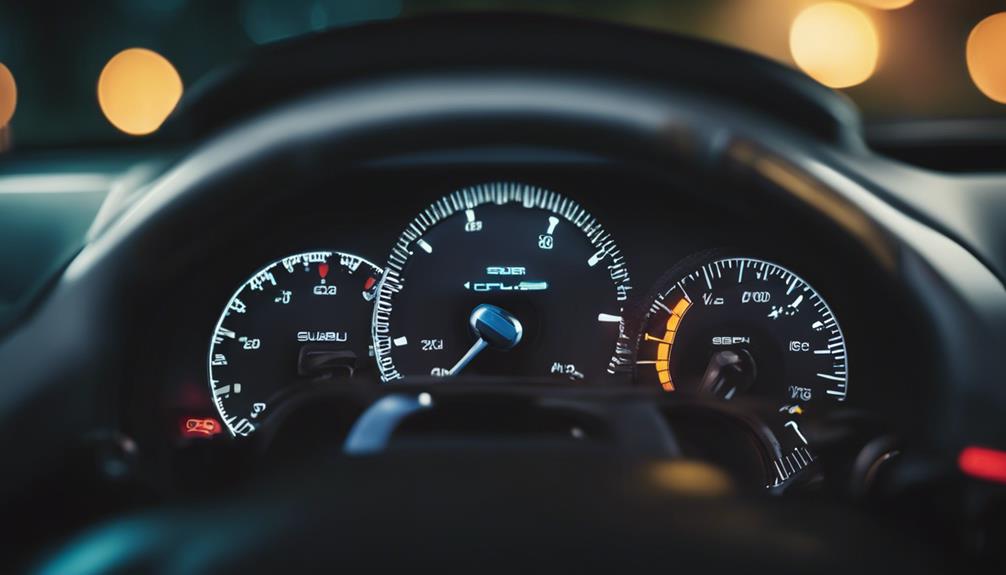Get the scoop on decoding your Subaru’s dashboard symbols. **Check Engine Light** pops on if your engine or emissions have issues. **Oil Pressure Warning** shows up when pressure is low, and it needs a quick fix. **TPMS** keeps an eye on tire pressure to ensure safety and efficiency. The **Brake System Warning** requires immediate attention for brake safety. That **Battery Charge Warning** points to charging system problems. **TCS** stands for traction control, and **VDC** refers to vehicle dynamics. **Eco Mode** is all about boosting fuel efficiency. **Maintenance Reminders** help keep your vehicle running at its best. Understanding these indicators means driving your Subaru safer and smarter.
Key Takeaways
- Check Engine Light: Indicates engine or emission issues, solid light means maintenance, flashing light signals severe problems.
- Oil Pressure Warning: Low pressure can damage engine, immediate action necessary, regular oil changes maintain proper levels.
- Tire Pressure Monitoring System (TPMS): Essential for safety, low pressure impacts handling, prompt response prevents issues.
- Brake System Warning Light: Indicates brake issues, prompt action needed, ignoring compromises safety.
- Battery Charge Warning: Signals charging system problems, leads to breakdown if ignored, regular maintenance essential.
Check Engine Light
When the Check Engine Light illuminates in your Subaru, it signals potential engine or emission system issues that demand immediate attention. A solid-lit Check Engine Light indicates the necessity for maintenance, while a flashing light signifies a severe problem with the engine.
Ignoring this warning can result in damage to essential vehicle components and lead to expensive repairs. To prevent Check Engine Light issues and safeguard your engine's health, regular maintenance is essential.
While it's generally safe to drive with a solid-lit Check Engine Light, it's advisable to visit a certified mechanic promptly to diagnose and address any underlying engine issues.
Oil Pressure Warning
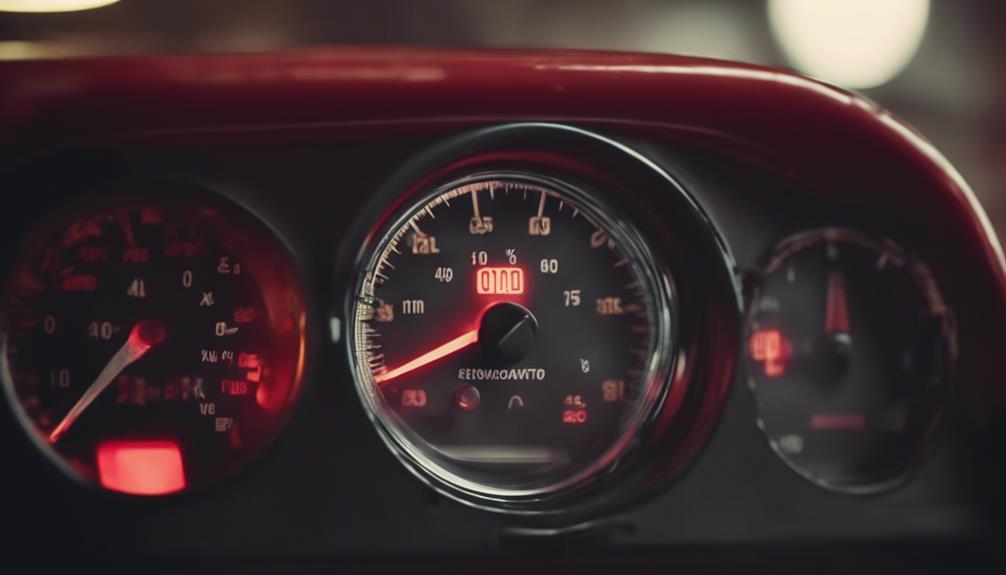
Maintaining proper oil pressure levels in your Subaru is essential to prevent engine damage and costly repairs. When the oil pressure warning light illuminates, indicating low oil pressure, immediate action is important to avoid potential engine failure. Ignoring this warning can lead to severe consequences, including expensive repairs that could have been prevented. Regular oil changes play a crucial role in ensuring that your engine maintains the ideal oil pressure levels needed for smooth operation. Driving with low oil pressure can result in significant engine damage, making it essential to address the issue promptly. Below is a table summarizing key points about the oil pressure warning and its implications:
| Oil Pressure Warning |
|---|
| Low oil pressure can lead to engine damage. |
| Immediate action is necessary when the warning light illuminates. |
| Regular oil changes help maintain proper oil pressure levels. |
| Ignoring the warning can result in costly repairs or engine failure. |
Tire Pressure Monitoring System (TPMS)
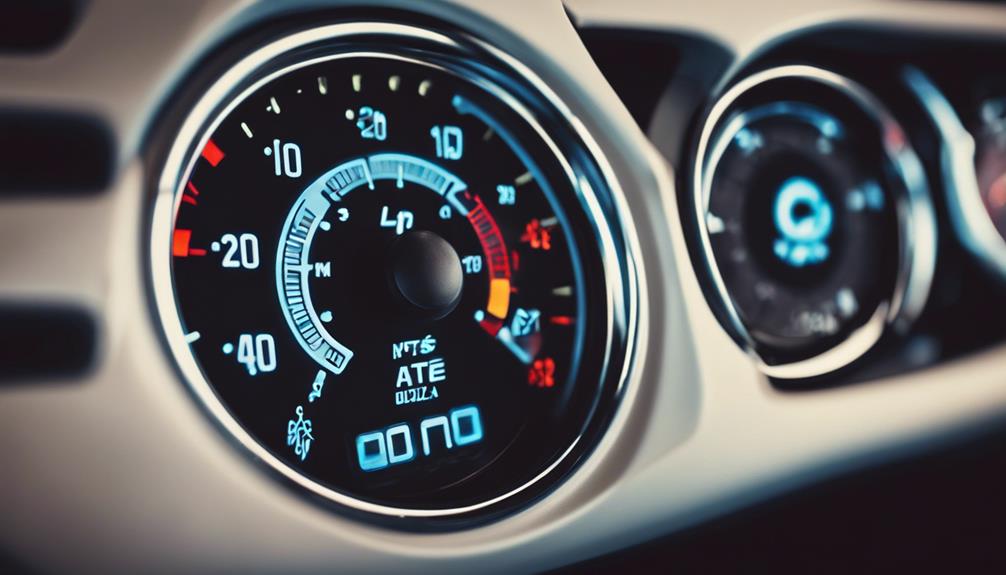
Regularly monitoring the Tire Pressure Monitoring System (TPMS) in your Subaru is essential for peak performance and safety on the road. The TPMS symbol on your dashboard serves as an important indicator of low tire pressure or system malfunction.
Maintaining proper tire pressure not only enhances fuel efficiency but also extends tire longevity. Under-inflated tires can greatly impact vehicle handling and compromise safety. By consistently checking and adjusting tire pressure, you guarantee excellent performance and reduce the risk of potential issues.
The TPMS is designed to alert drivers to any tire irregularities promptly, promoting safer driving habits. Remember, a quick response to the TPMS symbol can prevent more severe problems down the road. Stay proactive and prioritize the health of your tires to enjoy a smooth and secure driving experience in your Subaru.
Brake System Warning Light
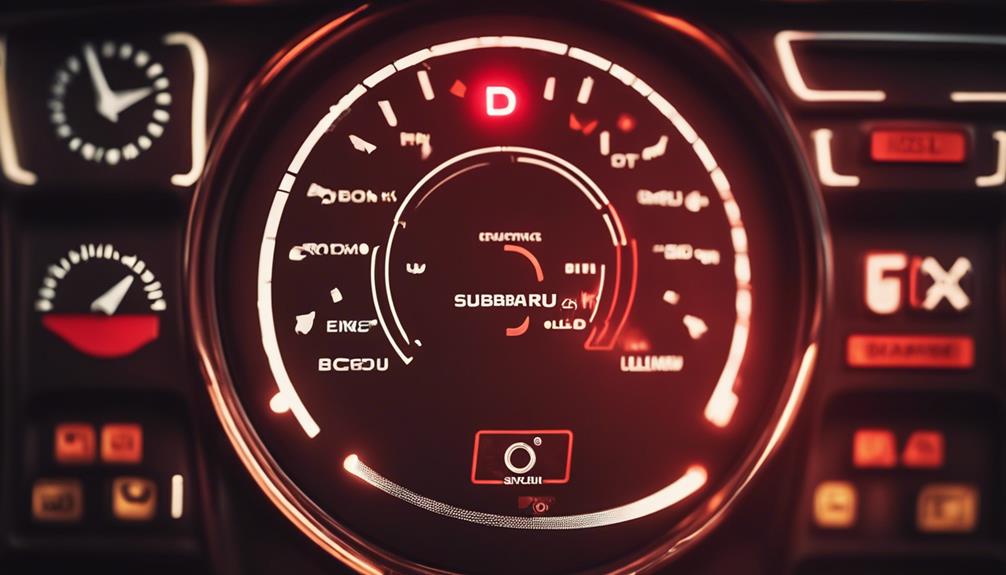
Monitoring the Brake System Warning Light in your Subaru is important for ensuring safe driving conditions and prompt maintenance. When this light illuminates, it's essential to take immediate action to address any potential brake system issues. Here's what you need to know:
- Low brake fluid levels:
A common reason for the Brake System Warning Light to come on is low brake fluid levels. This could indicate a leak or simply that the fluid needs to be topped up.
- Brake malfunctions:
The light may also indicate various brake malfunctions that need to be promptly addressed to ensure the brakes are functioning correctly.
- Mechanic inspection:
It's important to have a mechanic inspect the brake system as soon as possible to diagnose and fix any underlying issues causing the warning light to activate.
- Driving safety:
Ignoring the Brake System Warning Light can compromise your driving safety and potentially lead to accidents. Prompt attention to this warning is essential for the safety of both the vehicle and its occupants.
Battery Charge Warning
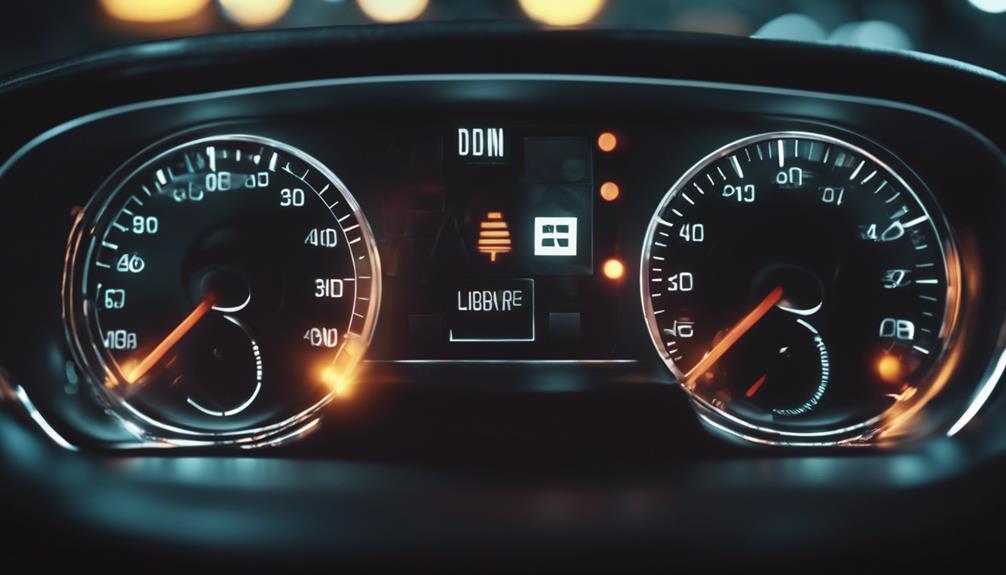
When the Battery Charge Warning light illuminates in a Subaru, it signals potential issues with the car's charging system, such as a failing battery or alternator. Ignoring this warning can lead to a car breakdown due to inadequate electrical power. It's vital to promptly have a professional mechanic inspect the vehicle when the battery charge warning light comes on.
Addressing this warning promptly can help prevent further damage to the car's electrical system. To avoid battery-related issues and the illumination of the battery charge warning light, regular maintenance and checks are essential. By staying proactive and addressing any issues related to the charging system promptly, Subaru owners can guarantee the smooth operation of their vehicles.
Cruise Control Indicator
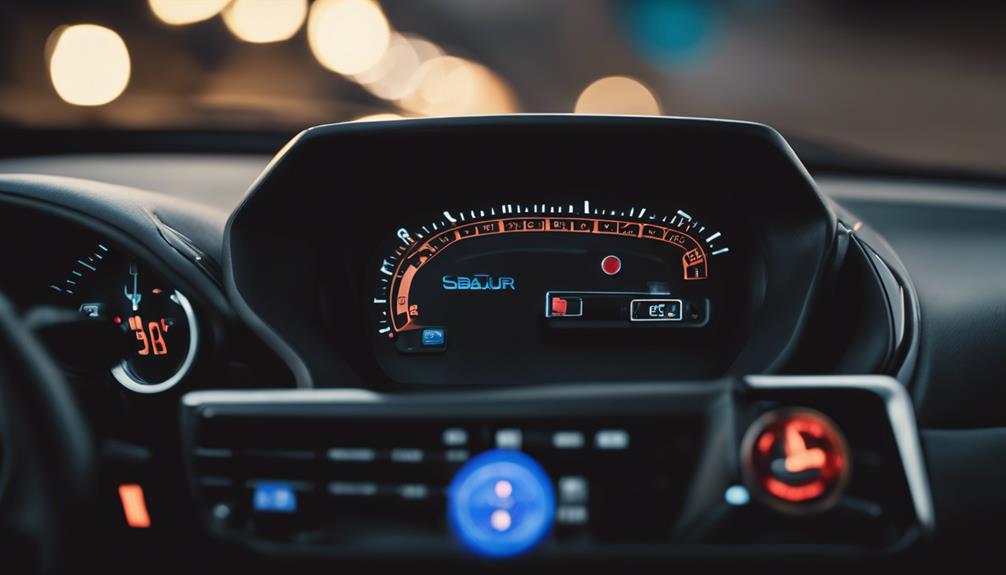
Engage cruise control effortlessly in your Subaru by pressing the designated button on the steering wheel to set and maintain your desired driving speed. The Cruise Control Indicator symbol on your dashboard lights up to signal the activation of cruise control, ensuring a steady speed for a more relaxed driving experience.
Here are some key points about the cruise control system:
- Improved Fuel Efficiency: Cruise control helps enhance fuel efficiency on highways by maintaining a consistent speed, reducing unnecessary fuel consumption due to frequent acceleration and deceleration.
- Convenient Engagement: Activating cruise control is simple; just press the designated button on your steering wheel to engage the system.
- Steady Speed: Once activated, cruise control allows you to set a constant speed, providing a smoother and more comfortable ride.
- Easy Controls: Adjust your desired driving speed easily using the controls provided, giving you more control over your driving experience.
Traction Control System (TCS)
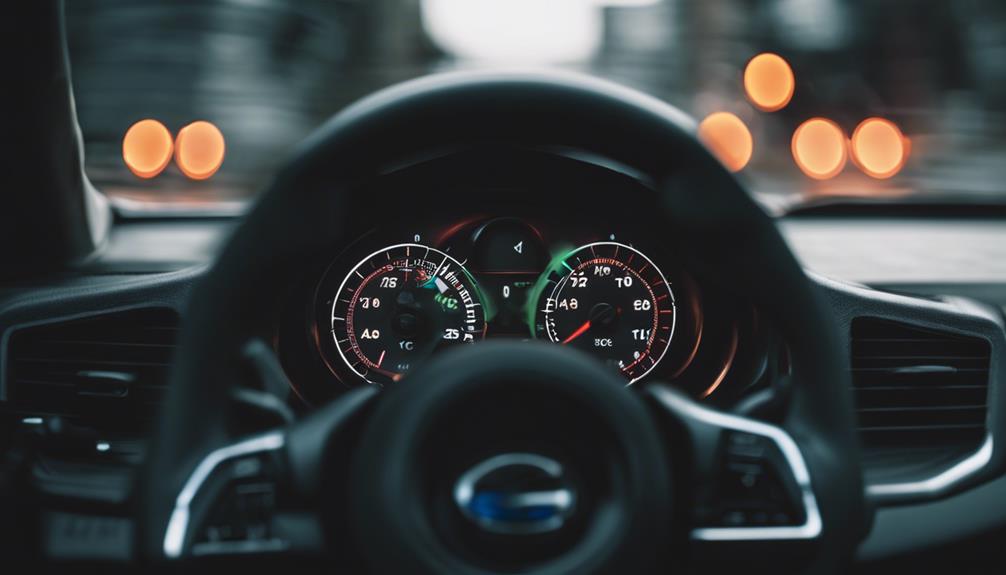
Switching our focus to the Traction Control System (TCS), this safety feature plays an essential role in maintaining stability and preventing wheel slip on challenging road surfaces. When driving on slippery roads, the TCS helps by preventing wheel slip through the selective application of brakes to individual wheels or by reducing engine power.
This system enhances vehicle stability and control, especially during acceleration on low-traction surfaces. The TCS light on the dashboard serves as a warning indicator, signaling when the system is actively engaged.
Designed to improve driving safety, the TCS aims to prevent skidding or loss of control in challenging road conditions. By automatically adjusting the vehicle's power output, the TCS assists drivers in maintaining control and stability, ultimately enhancing the overall driving experience.
Vehicle Dynamics Control (VDC)
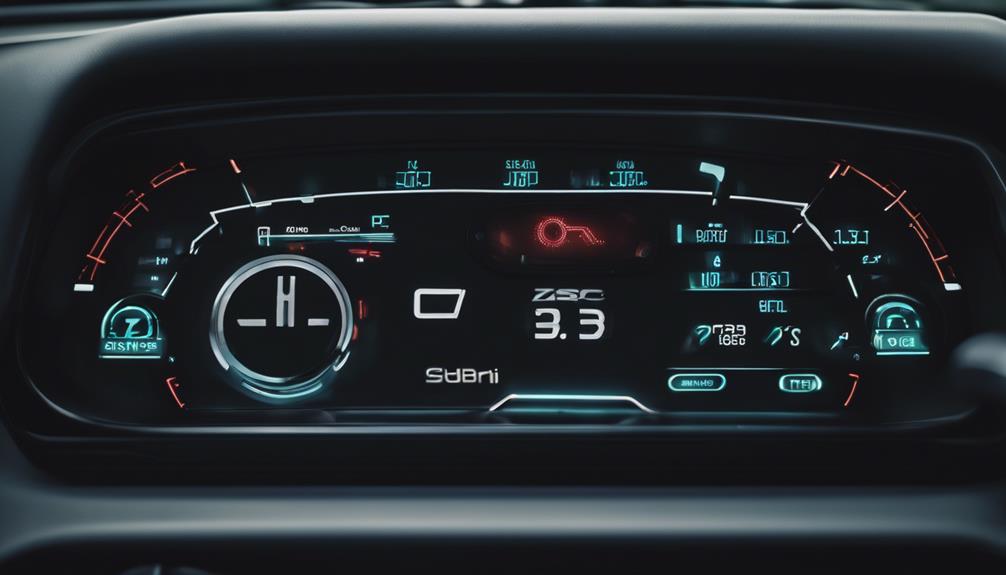
Vehicle Dynamics Control (VDC) enhances driving stability by actively monitoring and adjusting vehicle dynamics in response to challenging road conditions. Here's how VDC works to keep you safe on the road:
- Stability Control System: VDC serves as a sophisticated stability control system, intervening during sudden maneuvers or slippery road conditions to prevent skidding.
- Sensor Monitoring: Through sensors that track wheel speed, steering angle, and lateral acceleration, VDC can detect potential instability in real-time.
- Intelligent Interventions: When instability is detected, VDC can independently apply brakes to specific wheels or reduce engine power to help the vehicle stay on the intended path.
- Enhanced Handling: By working in tandem with traction control systems, VDC greatly improves vehicle handling, minimizing the risk of accidents, particularly in challenging driving scenarios.
Innovative VDC technology ensures that your Subaru maintains top stability and control, providing a safer and more secure driving experience.
Eco Mode Indicator
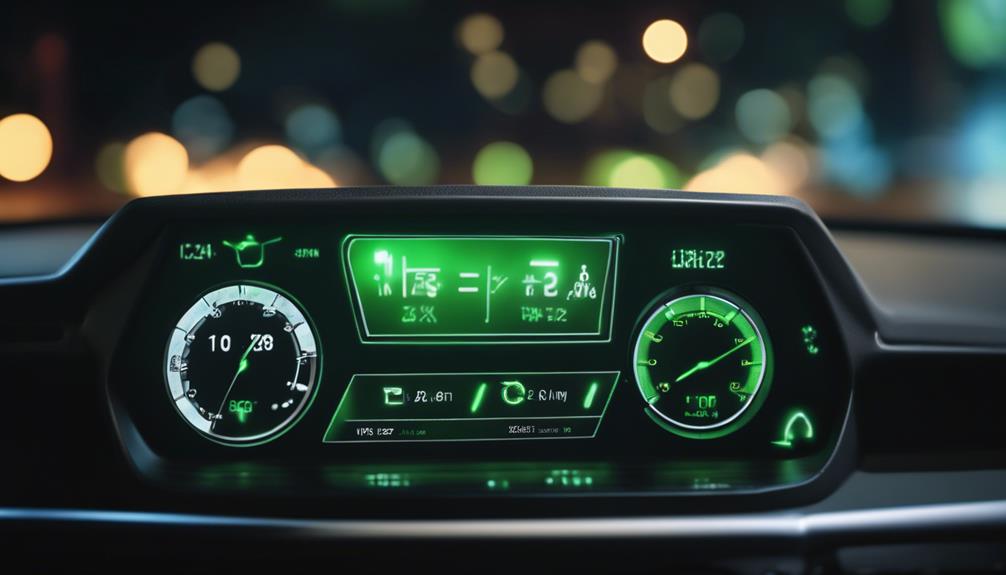
The Eco Mode Indicator on Subaru vehicles is designed to promote fuel-efficient driving habits by adjusting performance settings.
By activating this feature, drivers can benefit from better fuel economy and reduced emissions during regular driving.
Understanding when and how to use the Eco Mode Indicator can help maximize fuel efficiency and minimize environmental impact.
Understanding Eco Mode
When driving with the Eco Mode Indicator activated, our vehicle's engine performance is optimized to promote fuel-efficient driving. Here's how Eco Mode works to reduce fuel consumption and maximize savings on fuel costs:
- Throttle Response: Eco Mode adjusts the throttle response, ensuring a smoother and more controlled acceleration process.
- Engine Power Output: By fine-tuning the engine power output, Eco Mode maintains adequate performance while prioritizing fuel economy.
- Fuel Efficiency: The system actively promotes fuel-efficient driving habits, such as smoother acceleration and reduced idling, to conserve fuel.
- Cost Savings: Over time, driving in Eco Mode can lead to significant savings on fuel costs, making it a smart choice for eco-conscious drivers.
Benefits of Eco Mode
Enhancing fuel efficiency and promoting eco-friendly driving habits, the Eco Mode Indicator optimizes engine performance for cost savings and reduced emissions. By encouraging fuel-efficient driving, this feature adjusts throttle response and engine power to enhance fuel economy.
Adopting eco-friendly habits becomes second nature with the Eco Mode Indicator, leading to a reduction in fuel consumption and lower overall driving costs. This visual reminder on the dashboard serves as a gentle nudge towards environmentally conscious driving practices.
Embracing Eco Mode not only benefits the environment by reducing emissions but also helps drivers save money through improved fuel efficiency. So, next time you see that Eco Mode Indicator light up, rest assured that you're making a positive impact while also enjoying cost savings on your journeys.
When to Use
Switching on the Eco Mode Indicator during long highway drives can greatly enhance fuel efficiency without compromising performance. The Eco Mode encourages fuel-efficient driving habits and a more eco-friendly approach to driving.
Here are four key points to ponder when deciding to use the Eco Mode Indicator:
- Optimized Settings: The Indicator adjusts vehicle settings to maximize fuel efficiency.
- Balanced Performance: It promotes eco-friendly driving without sacrificing performance.
- Reduced Emissions: Activating Eco Mode can lead to lower fuel consumption and emissions.
- Awareness of Habits: The Indicator helps drivers become more mindful of their driving habits for enhanced efficiency.
Maintenance Reminders
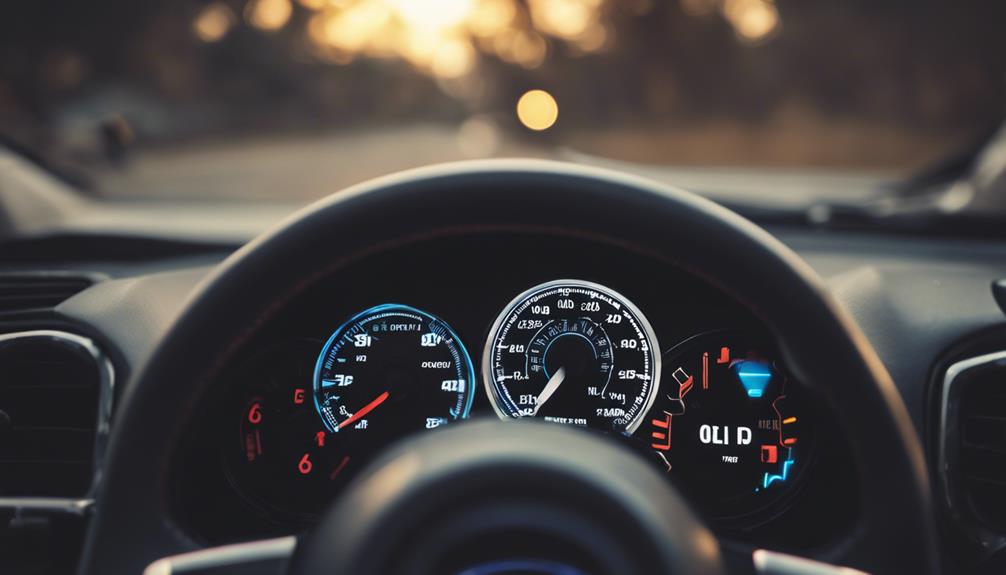
Maintenance reminders displayed on Subaru's dashboard play a crucial role in guaranteeing the vehicle's peak performance and longevity. These reminders encompass various aspects of maintenance, such as oil change notifications, filter replacement indicators, brake inspection reminders, fluid level monitoring alerts, and regular maintenance dashboard symbols. Here's a breakdown of each reminder type:
| Maintenance Reminder | Description | Importance |
|---|---|---|
| Oil Change Notifications | Prevent engine damage by reminding you to change the oil regularly. | Engine longevity |
| Filter Replacement Indicators | Maintain clean operation by alerting you to replace air, oil, or cabin filters. | Air quality |
| Brake Inspection Reminders | Ensure safety by prompting you to check brake system components. | Accident prevention |
| Fluid Level Monitoring Alerts | Alert you to low levels of essential fluids like coolant or oil. | Engine health |
| Regular Maintenance Symbols | Serve as reminders for scheduled upkeep to maintain peak vehicle performance. | Longevity and performance maintenance |
Frequently Asked Questions
What Does the Symbol on the Subaru Mean?
When we see that symbol on the Subaru dashboard, it means the Check Engine Light is on, signaling potential engine or emission system problems.
It's important to act promptly, consulting the owner's manual for specific guidance. Ignoring the symbol could lead to severe engine damage, necessitating immediate inspection by a professional mechanic.
Regular maintenance helps prevent this issue, ensuring peak vehicle performance and avoiding costly repairs and breakdowns.
What Does It Mean When All Dashboard Lights Come on Subaru?
When all dashboard lights come on in a Subaru, it's a sign of potential system malfunction or electrical issue. This could stem from faulty sensors, wiring problems, or battery issues impacting multiple systems.
Addressing this promptly is essential to prevent further damage and guarantee safe driving. Consulting a certified mechanic for diagnostics and repairs is key when all dashboard lights illuminate simultaneously.
Ignoring this situation could lead to safety hazards and costly repairs down the line.
What Do the Signs in the Dashboard Mean?
When the signs light up on the dashboard, they convey vital information about the car's health and performance. Each symbol indicates a specific issue or system status, guiding us to take necessary action promptly.
Understanding these signs can help us maintain our vehicle effectively and prevent potential problems. It's important to refer to the owner's manual for detailed explanations on what each symbol means to guarantee safe and smooth driving experiences.
What Is the Malfunction Indicator Light on a Subaru?
The malfunction indicator light on a Subaru, also known as the Check Engine Light, signals potential engine or emission system issues. It's essential for early problem detection to prevent costly repairs and breakdowns.
Ignoring it can lead to significant vehicle damage. Diagnosing and fixing the underlying problem promptly is important for vehicle maintenance. Remember, this light is like a vehicle's health alert system, so it's best not to ignore it!
Do Subaru and Dodge Dashboard Symbols Have Similar Meanings?
When comparing Subaru and Dodge dashboard symbols, it’s crucial to understand the meanings behind the 10 dashboard symbols explained to ensure safe driving. While some symbols may have similar meanings, it’s essential to consult the owner’s manual for specific details on each vehicle’s dashboard symbols.
What Are Some of the Common Dashboard Symbols in Subaru Cars and What Do They Mean?
When driving a Subaru, understanding the meaning of EMD is crucial. Common dashboard symbols include the check engine light, oil pressure warning, and low fuel indicator. The EMD symbol represents the electronic throttle control system, indicating a potential issue with the vehicle’s acceleration. It’s important to address these symbols promptly for safe driving.
Conclusion
To sum up, understanding your Subaru's dashboard symbols is essential for safe driving.
Did you know that 64% of drivers ignore their check engine light for two weeks or more?
Don't be part of that statistic!
Stay informed and take action when you see any warning lights on your dashboard to guarantee the longevity and performance of your vehicle.
Robert, Research Specialist—Robert specializes in visual explorations and brings a keen eye for detail to our research team. He delves into the historical and cultural backgrounds of symbols to present deeply researched content beautifully, making the old and mystical accessible to a modern audience.

